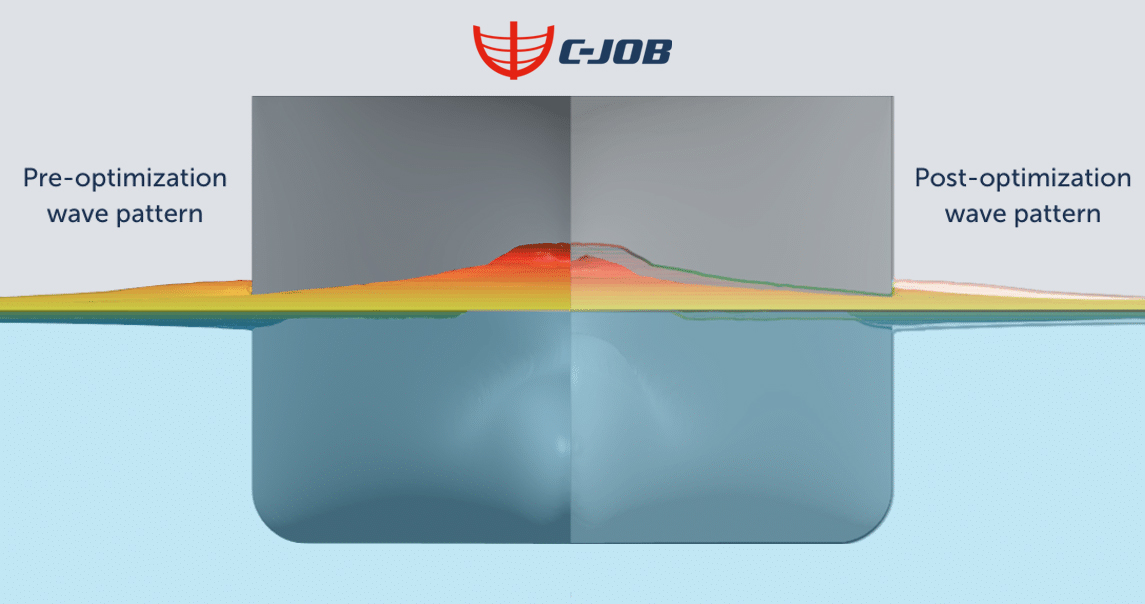Motion analysis, once used exclusively by specialized institutions, has been transformed from a niche technology into an established tool in ship design. The reduced cost of high-performance computing is one reason for this, and the rise in customer demand for design assurance is another.
But that’s not to say that the fundamentals of motion analysis are widely recognized in the maritime industry. In fact it is often confused with other related design tools, such as seakeeping analyses and CFD technology.
That is all the more reason to delve into the basics of this under-reported technique in ship optimization, and to explain the benefits it offers to shipowners and prospective operators alike.
A tough nut to crack
“At its core, motion analysis is about determining how a structure — usually a ship, but it can also be used for barges and platforms — will react to waves,” says Mark Slagmolen, Senior Engineer at C-Job Naval Architects.
But to the uninitiated outsider, the complex data, labyrinthine graphs, and unfamiliar terminology of motion analysis may be difficult to grasp.
Mark explains the process simply. “First, we put a 3D model of a ship’s hull and several parameters into the motion analysis software. We click ‘Run’ and the software generates graphs called Response Amplitude Operators. They show us how the ship will react to a wave of a fixed height and length.
“Then starts the most interesting part: post-processing,” enthuses Mark. “We take those baseline results, and use formulas and statistics to quantify how the ship will behave in its ‘real world’ conditions.”
Showing the value and risks of a business case
Mark gives examples of how these results can benefit prospective owners of various types of structures, starting with those in the offshore industry.
“Tasks like drilling or crane operations have motion limits,” he says. “Too much movement from waves, wind, or currents can make them unsafe or inefficient. With motion analyses, we can take a computer model and quantify at the start of a design project how wave conditions will affect its real-world operability.
“Or, consider a cruise vessel,” continues Mark. “We can look at its intended route and predict the likelihood of passengers experiencing motion sickness. The outcome may result in the addition of fins to reduce the ship’s rolling motion and maximize passenger comfort.”
He also highlights one of the tool’s benefits for ships already built. “We can analyze whether a ship designed for waves typical of, say, the coast of Africa will face operational challenges in areas with different wave characteristics, such as the North Sea. We can also assess whether this change in environment will cause excessive vessel motion and, if so, explore potential solutions to ensure the crew can perform their tasks safely and efficiently.”
A key piece of the ship optimization puzzle
Of course, the results of the simulations rely on the quality of the input, which in turn depends on an engineer’s expertise in ship motions and ship design.
The benefits of working with motion analysis experts include being able to foresee difficulties at the start of a design, when 90% of a vessel’s cost has yet to be determined.
Mark gets to the crux of the tool’s potential. “It can evaluate a design based on the client’s intended activity and operating area, and can translate that into a percentage figure of workable days. This helps the client to define, confirm, or improve their business case.”
Often, contracts are time-limited, and every non-operational day increases costs for the vessel owner’s client. Being able to offer clients reliable efficiency in the form of a vessel with the highest possible proportion of workable days is, of course, of infinite value to a vessel owner.
“Suppose we have a client seeking to build a service vessel for a wind farm off the east coast of England. With motion analysis, we could for instance determine that one design would enable the vessel to operate 90 to 95 percent of the time, while another would enable only 80 percent.”
The good news for prospective shipowners and operators doesn’t end there. Using the results of motion analyses together with those of other simulation tools results in the best trade-off between objectives. When naval architects can base their decisions on facts rather than gut feeling, the client gets a design that is optimal for their business case, balancing performance, efficiency, comfort, and long-term success.


